Wearing sandals with blisters is a common problem, affecting the comfort and health of many people. Especially when you have to move a lot or walk for a long time, this condition is not only painful but can also lead to more serious damage to the skin of the feet. The article below Shondo Blog will provide you with the causes, remedies, and instructions on choosing sandals to effectively avoid blisters. Let's find out now!
1. Causes of blisters when wearing sandals
There are many reasons why you might get blisters from wearing sandals. Here are some common causes:
1.1 Inappropriate shoe size
When you choose slippers that don’t fit your feet properly, especially if they are too tight, your feet will be subjected to more pressure from the edges of the slippers. This causes constant friction, leading to blisters. Conversely, if the slippers are too loose, your feet will move back and forth inside the slippers, creating unnecessary friction.
[caption id="attachment_5785" align="aligncenter" width="800"]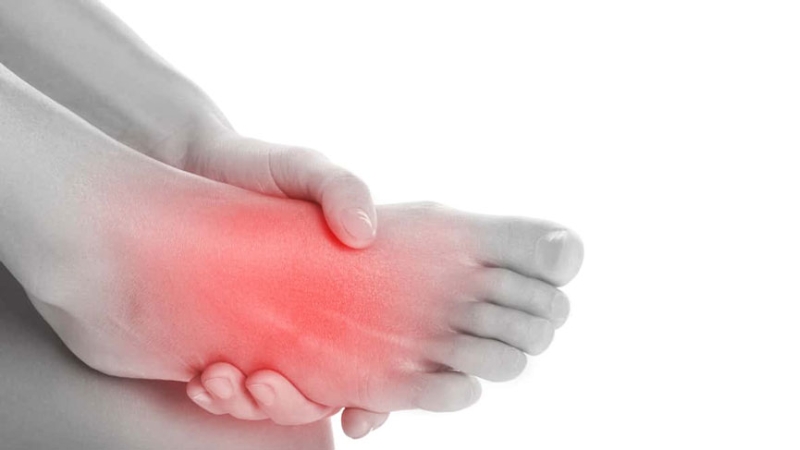 Incorrect shoe size is the main cause of swollen feet when wearing sandals[/caption]
Incorrect shoe size is the main cause of swollen feet when wearing sandals[/caption]
1.2 Hard sandal material
Some men's sandals are made of materials that are too hard and inflexible, which increases friction with the skin of the feet when moving, especially in sensitive areas such as the heels and toes. Hard materials can cause damage and create large blisters.
1.3 New slippers not familiar yet
When you buy a new pair of slippers, even if they fit your feet well, your feet still need time to get used to them. During the first few days of use, the slippers are not yet loose and your feet are not yet adapted to the new design, which can lead to blisters.
1.4 Sweaty feet
When your feet are damp from sweat, the skin becomes softer and more susceptible to friction. This increases the risk of blisters, especially if you wear sandals for long periods of time or are active in hot and humid weather.
[caption id="attachment_5786" align="aligncenter" width="800"]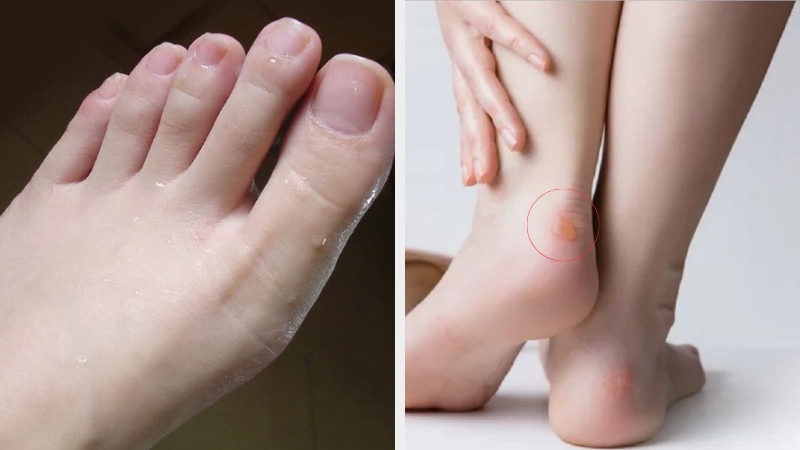 Feet sweat a lot causing blisters when wearing sandals[/caption]
Feet sweat a lot causing blisters when wearing sandals[/caption]
2. How to fix swollen feet when wearing sandals
If you have experienced blisters in your feet from wearing sandals, don't worry, there are many ways to fix and prevent this condition.
2.1 Choose sandals that fit your foot size
First, make sure you choose the right size for your feet. When buying sandals, you should try them on first to feel the comfort. If buying online, refer to the manufacturer's size chart and measure your feet carefully to choose the right size.
2.2 Use of insole products
Slipper insoles are a simple solution to the problem of blisters when wearing slippers, but they are very effective in reducing friction between the foot and the slippers. Soft, comfortable insoles will help protect the foot better and avoid injury. You can buy specialized insoles at shoe stores.
2.3 Use a band-aid
If you know in advance which areas of your feet tend to blister when wearing slippers, you can apply a band-aid to protect them before putting on the slippers. This will help reduce friction and avoid skin damage.
[caption id="attachment_5787" align="aligncenter" width="800"]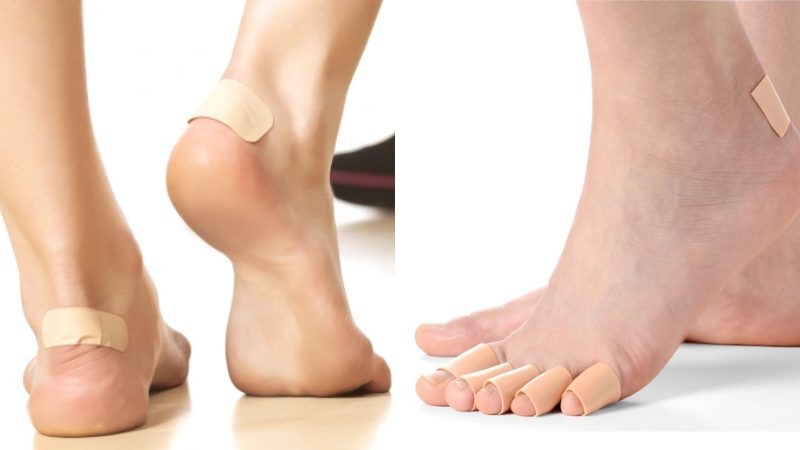 Use a band-aid to fix blisters when wearing sandals[/caption]
Use a band-aid to fix blisters when wearing sandals[/caption]
2.4 Use moisturizer
Moisturizer will help soften the skin on your feet, thereby reducing friction when moving. You can apply cream before putting on slippers, especially on areas prone to blisters such as heels and toes.
2.5 Soften the slippers before use
For new slippers, take the time to soften them before wearing them regularly. This will help them become more flexible and reduce the risk of injuring your feet. You can gently bend the straps or soles of the slippers to help them adapt to the shape of your feet.
3. How to choose slippers to avoid blisters
To choose comfortable slippers that don't cause blisters, you should refer to the following two ways:- Choose sandals with soft and flexible straps
When choosing sandals, prioritize sandals with soft and flexible straps, which help reduce friction with the skin of your feet. Soft straps not only help you move more comfortably but also protect sensitive areas of the skin on your feet.
[caption id="attachment_5788" align="aligncenter" width="800"]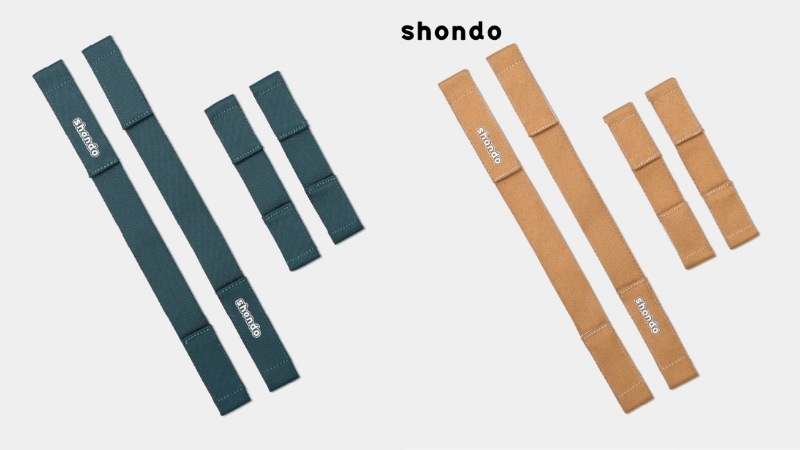 The sandal straps at Shondo are made from very soft material[/caption]
The sandal straps at Shondo are made from very soft material[/caption]
- Prioritize breathable, soft sandals
The material of the sandals plays an important role in reducing the risk of blisters. You should choose sandals with breathable materials to limit sweaty feet and create a dry feeling. Sandals with soft soles will help reduce pressure on the feet, thereby preventing blisters.
One of the sandal brands that is highly appreciated for its comfort and softness is Shondo sandals . Shondo sandals have soft, breathable materials and soft soles, making them an ideal choice for those who want to avoid blisters. With sophisticated designs, Shondo products not only bring a comfortable feeling when moving but are also highly aesthetic, suitable for many fashion styles.
[caption id="attachment_5789" align="aligncenter" width="800"]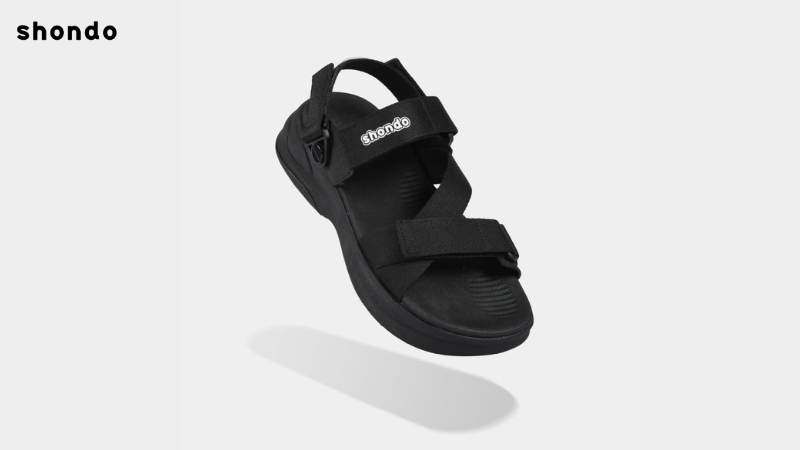 Shondo sandals are designed to be light and soft with high-quality Phylon material[/caption]
Shondo sandals are designed to be light and soft with high-quality Phylon material[/caption]
4. Notes when wearing sandals for long periods of time
When wearing sandals for long periods of time, there are a few things you need to keep in mind to protect your feet and avoid blisters.
- Change slippers regularly
If your slippers are worn or no longer comfortable, you should replace them with new ones. Old slippers often do not provide good support and can cause injury.
- Rest when needed
If you have to move around a lot, take breaks to let your feet relax. This will not only help prevent blisters but also reduce stress on your calf muscles.
- Keep your feet and shoes clean
Keeping your feet and footwear clean is important, especially in hot and humid weather. Keeping your feet clean and dry reduces the risk of sweat and blisters.
[caption id="attachment_5790" align="aligncenter" width="800"]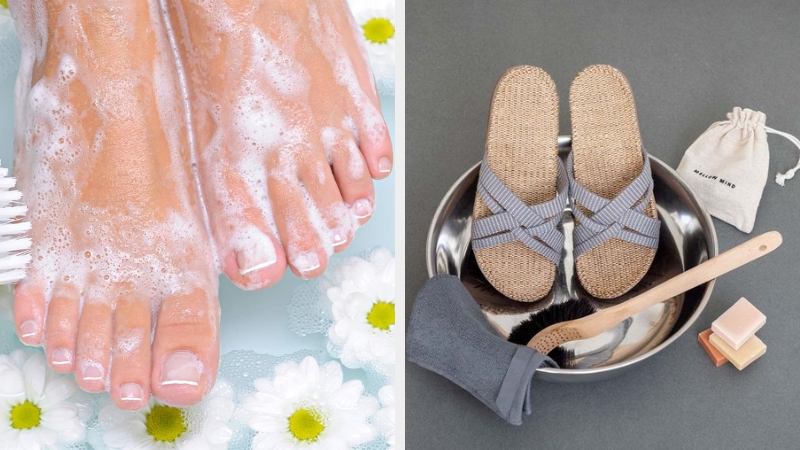 Keep your feet and slippers clean to limit blisters when wearing slippers[/caption]
Keep your feet and slippers clean to limit blisters when wearing slippers[/caption]
5. Frequently asked questions about blisters when wearing sandals
5.1 Why do feet swell easily when wearing new sandals?
New slippers are not yet softened and your feet are not yet used to the new design, which causes more friction than usual. This usually happens in the first few days of wearing new slippers. The fact that your feet are not yet adapted to the material or style of the slippers is the main reason why your feet are prone to blisters.
5.2 What should I do if I get blisters after wearing sandals?
If you develop a blister after wearing sandals, treat it immediately. Clean the affected area with a sterile saline solution. Then, apply a bandage or healing cream to help the blister heal. Also, temporarily stop wearing the sandals that caused the blister and choose a more comfortable pair.
In summary, above are the causes, solutions and instructions for choosing sandals to avoid the situation of wearing sandals causing blisters . Taking good care of your feet and choosing the right sandals will help you have more comfortable steps in your daily life.
Related Articles

Nếu bạn đã và đang sở hữu cho mình đôi giày ballet sneaker nhưng vẫn chưa biết outfit nào phù hợp. Xem ngay bài viết này với 5 cách phối đồ với giày ballet sneaker đẹp không có điểm trừ cùng Shondo...

Squid Game 3 chính thức khuấy đảo trên màn ảnh, bạn đã sẵn sàng ngồi liền 6 tập để xem cuộc chiến sinh tồn lần cuối của Gi-Hun chưa? Dưới đây là combo cuối tuần “chuẩn sinh tồn hiện đại” mà Shondo ...

Phong cách Retro là gì mà được nhiều người săn đón như vậy? Cùng Shondo tìm hiểu qua bài viết sau đây để biết thêm nhiều điều thú vị từ điểm đặc trưng cho đến cách phối đồ như thế nào là chuẩn nhé....

Một trong những trào lưu nổi bật gây sốt trên các cộng đồng yêu thời trang chính là phong cách Maillard. Nhưng điều gì khiến chúng lại có sức hút lớn đến như vậy? Shondo sẽ giúp bạn hiểu rõ hơn về...

Áo Polo nữ - item nghe thì tưởng già nhưng thực ra lại đang quay trở lại mạnh mẽ. Từ sân golf đến sân trường, từ văn phòng đến quán cafe, chiếc áo đơn giản với cổ bẻ đặc trưng này bỗng trở nên đa n...
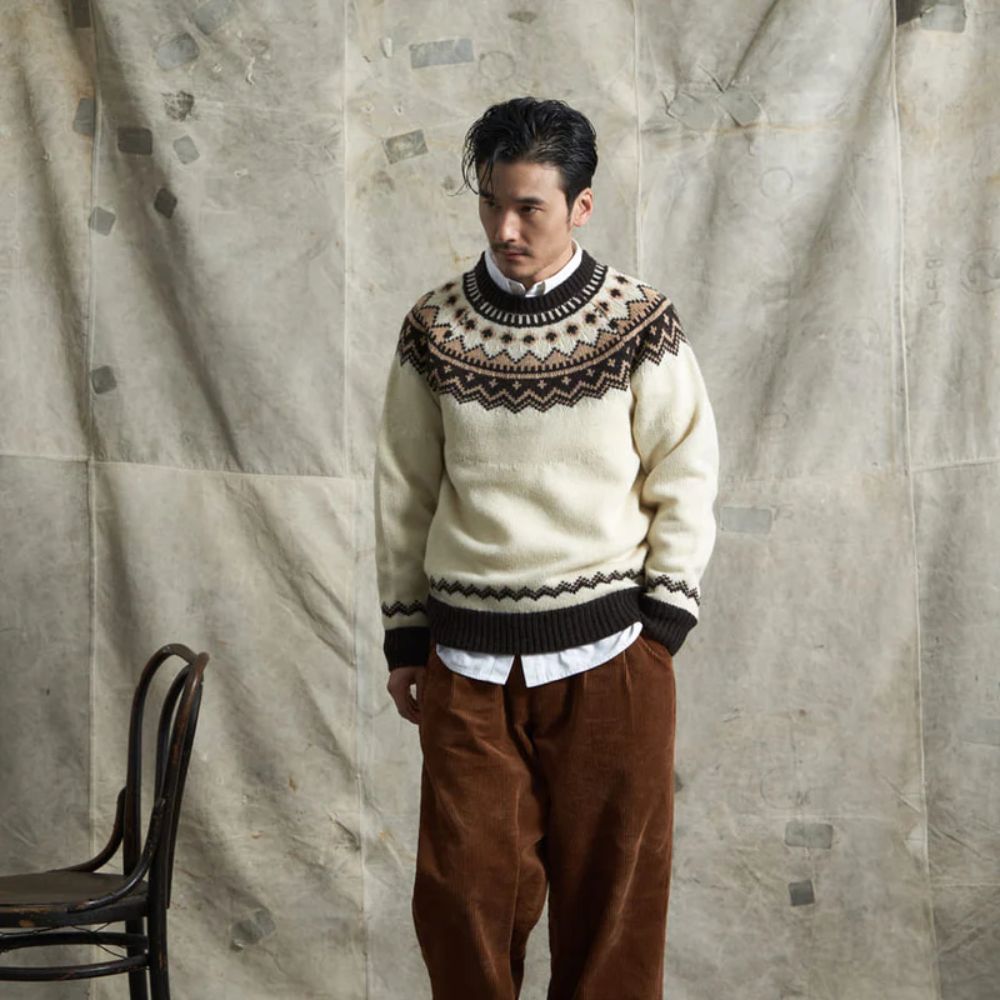
Phối đồ Vintage trong giới thời trang mang đến những nét độc đáo rất riêng. Phong cách này trở thành xu hướng phổ biến không chỉ ở nữ mà còn xuất hiện nhiều ở nam giới. Shondo sẽ cho bạn thấy điều ...

